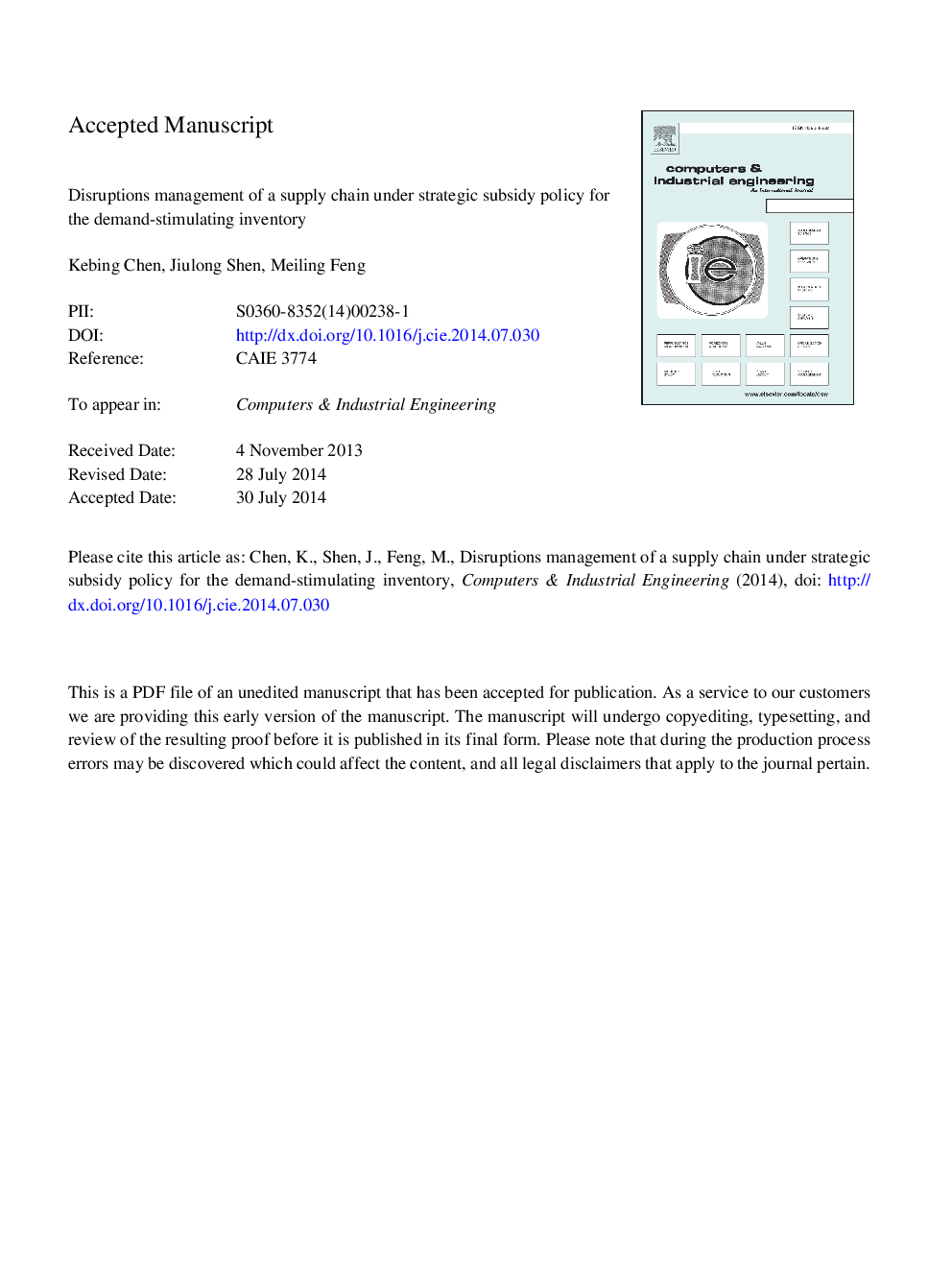| Article ID | Journal | Published Year | Pages | File Type |
|---|---|---|---|---|
| 7542325 | Computers & Industrial Engineering | 2014 | 35 Pages |
Abstract
This paper introduces a game model of one manufacturer and one retailer with the demand depending on the amount of inventory displayed on the retailer's shelf. We study coordination mechanisms of the supply chain with the two kinds of disruptions. To coordinate the channel as well as make a profit, the manufacturer needs to augment the wholesale price lever by another, i.e., an inventory-holding cost subsidy to the retailer. We show that the inventory-subsidy contract for disruption(s) situation has its rationality and limitation: from the perspective of feasibility analysis, we find that when the disrupted amount of inventory-holding cost is larger than a certain threshold value, both players can achieve win-win by using inventory-subsidy contract. Otherwise, it may be ineffective. For two-factor disruptions, there are some mutual restraints between the disrupted inventory-holding cost and the disrupted demand when the coordination mechanism is used. We also find that both disruption situations have their own robust scales, in which the manufacturer should not change the original production plan but at the expense of providing a more attractive subsidy scheme to the retailer. Interestingly, some counter-intuitive managerial insights can be observed in robust scales. For example, the market demand increases with the displayed inventory level in the setting of the demand-stimulating inventory. However, the higher the demand, the less displayed inventory level will be in the robust scale.
Related Topics
Physical Sciences and Engineering
Engineering
Industrial and Manufacturing Engineering
Authors
Kebing Chen, Jiulong Shen, Meiling Feng,
